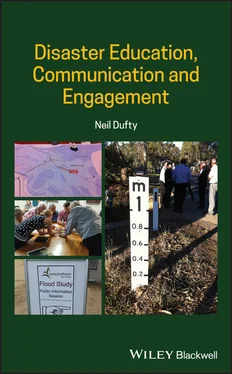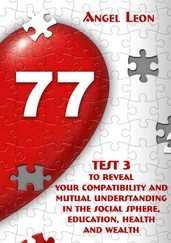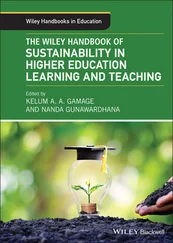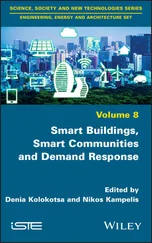Despite the differences between acute crises and disaster reconstruction, some common best practices in communication can be highlighted. For example, in both response and recovery contexts it is advisable to make use of a range of communication channels to reach out to a broader audience (Australian Red Cross 2010). Coordination is a core requirement in both crisis and recovery stages since the risk of duplicating efforts is high as many different actors participate in the disaster response and disaster reconstruction efforts, including governmental agencies, humanitarian organisations, private companies, media and professional groups, and community-based groups.
Communication networks among responders are critical to effective coordination and information transfer across emergency agencies and other organisations that are active in disasters.
As the complexity of the event increases, information about the disaster, its effects, associated response needs, jurisdictional responsibilities, available resources, and engaged organisations and personnel is distributed among an array of responders (Militello et al. 2007). As stated by Kapucu (2006), ‘if responders are not in contact with each other and if information does not flow properly, it is hard to envision a successful disaster response’.
Research has suggested that prior plans do not appear to be good predictors of actual communication interaction between agencies (e.g. Choi and Brower 2006). On the other hand, it appears that embedding communication relations and institutions improves the efficacy of disaster network interactions (Nowell and Steelman 2015).
Further discussion about crisis communications is found in Chapter 3.
‘Engagement’ is used here as a generic, inclusive term to describe the broad range of interactions between people. Based on the discussion about ‘community’ in Chapter 1, ‘community engagement’ is therefore a planned process with the specific purpose of working with identified groups of people, whether they are connected by geographic location, special interest, or affiliation, to address issues affecting their wellbeing (Queensland Department of Emergency Services 2001). It is sometimes called ‘civic engagement’ or ‘public engagement’.
In disaster management literature, in some cases the term ‘stakeholder’ is used to describe sections of a community. On the other hand, there may be ‘stakeholders’ other than those in the at-risk community (geographically located), and thus community engagement can be viewed as a subset of ‘stakeholder engagement’. For example, emergency managers, government agencies, and humanitarian organisations are stakeholders usually outside of the at-risk community and may also be the focus of the engagement. Stakeholders can then be defined as any group or individual who is affected by or can affect the achievement of the objectives of the engagement (Freeman 1984).
There are numerous approaches to community engagement, several of which have been adapted to assist in disaster management and disaster-related learning. Five of these broad approaches are described below.
2.3.1 Public Participation Spectrum
The key message for designing engagement processes is to avoid promising a level of participation and power that is never intended to be given, or designing processes that claim to be empowering, but merely offer ‘token’ levels of participation. Pretty and Hine (1999) have developed a typology of ‘participation’ to differentiate actions according to the level of power agencies wish to devolve to participants in determining outcomes and actions.
The International Association for Public Participation (IAP2) has developed the Public Participation Spectrum (IAP2 2019) to demonstrate the possible types of engagement with stakeholders and communities. The spectrum is widely used and is quoted in most community engagement manuals.
According to the spectrum there are five types of engagement:
1 Inform – to provide stakeholders with balanced and objective information.
2 Consult – to actively seek community views and input into policy, plans, and decisions.
3 Involve – to deliberately put into place a method to work directly with stakeholders throughout the process.
4 Collaborate – to partner with the community in each aspect of the decision.
5 Empower – to place final decision-making in the hands of the public.
As one moves through the spectrum from ‘inform’ through to ‘empower’ there is a corresponding increase in expectation for public participation and impact. In simply ‘informing’ stakeholders there is no expectation of receiving feedback, and consequently there is a low level of public impact. At the other end of the spectrum, ‘empowering’ stakeholders to make decisions implies an increase in expectations and therefore an increased level of public impact.
The IAP2 Spectrum has been widely used to guide the design of disaster-related community engagement. For example, the Australian Government has provided guidance (Australian Emergency Management Institute 2013) that uses the spectrum because ‘different types of engagement and levels of community involvement are required for different phases of an emergency’.
It could be argued that ‘empower’ is the only true level of engagement as it enables communities to have power in decision-making (Mosse 2003). Mansuri and Rao (2004) distinguish between ‘organic participation’, which originates from the people's own initiative to be active in some aspect of social change, and ‘induced participation’, which is the normal type that arises when an organisation wants to implement a project with the local people and participation is induced by the outside organisation. Arnstein (1969) argued that ‘participation without redistribution of power is an empty and frustrating process for the powerless’. For disaster-related community engagement ‘this may be overcome by an approach that builds community-wide trust and meets the real needs of those at risk’ (International Federation of Red Cross and Red Crescent Societies 2014b).
Public participation in gathering scientific observation about the world is not a new phenomenon. Following the devastating Lisbon earthquake of 1755, volunteers from all over Europe reported their experiences to help researchers create an early version of a ‘shake map’ that estimated the extent and intensity of the event (Coen 2012).
The term ‘crowdsourcing’ was coined in 2006 by journalist Jeff Howe to describe the ways in which the internet and mobile phones are facilitating the outsourcing to the public of tasks traditionally reserved for experts (Howe 2006).
Crowdsourcing can be described as the phenomenon where large groups of people (‘the crowd’) are used as the primary source of required services or content, typically on a voluntary basis and sometimes using internet-based channels. According to Holley (2010), ‘crowdsourcing uses social engagement techniques to help a group of people achieve a shared, usually significant, and large goal by working collaboratively together as a group’.
Disasters are prime examples of situations where the collective capacity of the crowd can make a difference. If properly organised, the crowd can bring direly needed extra capacities to professionals and help accelerate the disaster recovery process. Also, crowdsourcing platforms help to bridge collaboration and information gaps between the various communities that play a role in disaster management (Neef et al. 2013).
Crowdsourcing can also be used prior to a disaster in community risk awareness and participation in risk mitigation and preparedness activities. ‘An important reason to consider including crowdsourcing in risk assessment is that in addition to providing information, participants are themselves learning about risk in their area. Crowdsourcing thus becomes an avenue for risk communication through outreach and sensitization. Through involving new participants in the process, crowdsourced approaches also create opportunities to make risk assessment more inclusive. This can both improve the quality of the risk assessment through including local knowledge and raise public confidence in the results through increased understanding and ownership of the results’ (Soden 2017).
Читать дальше












